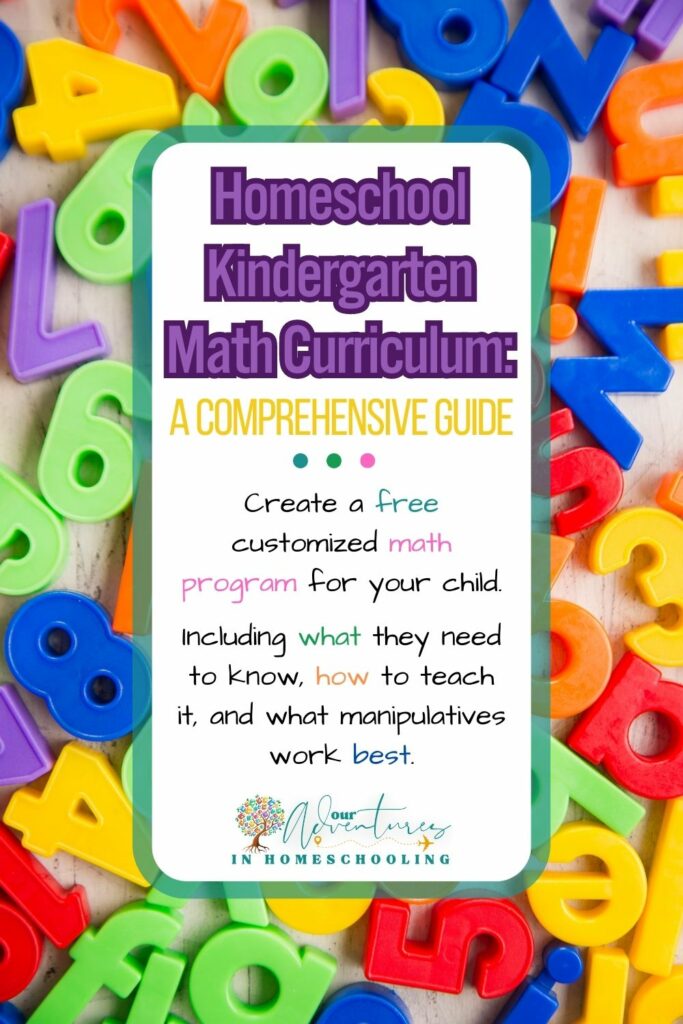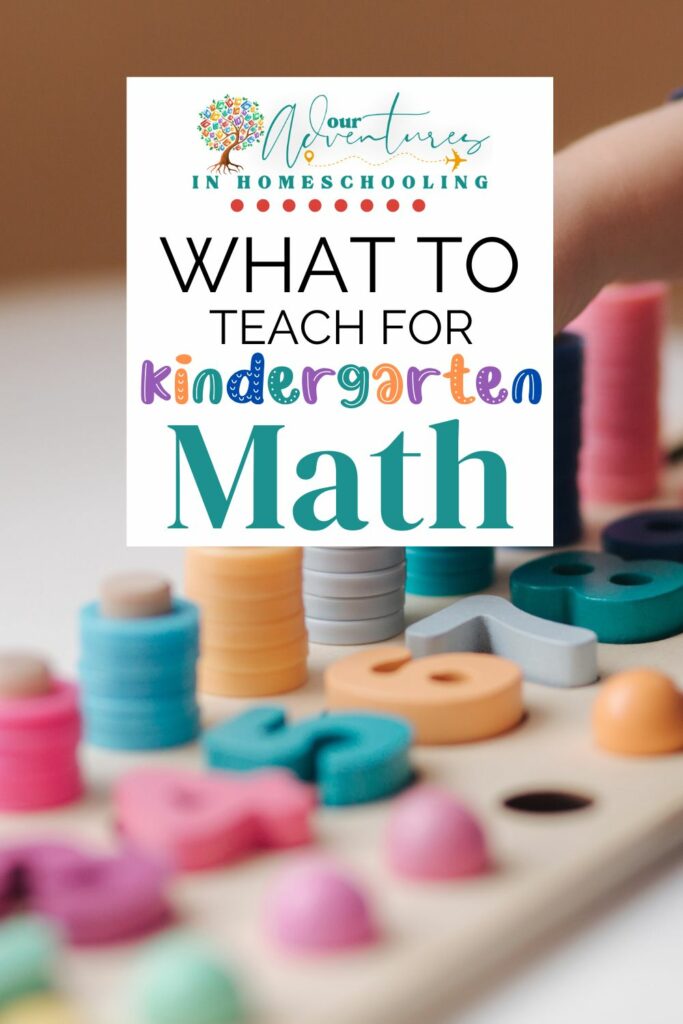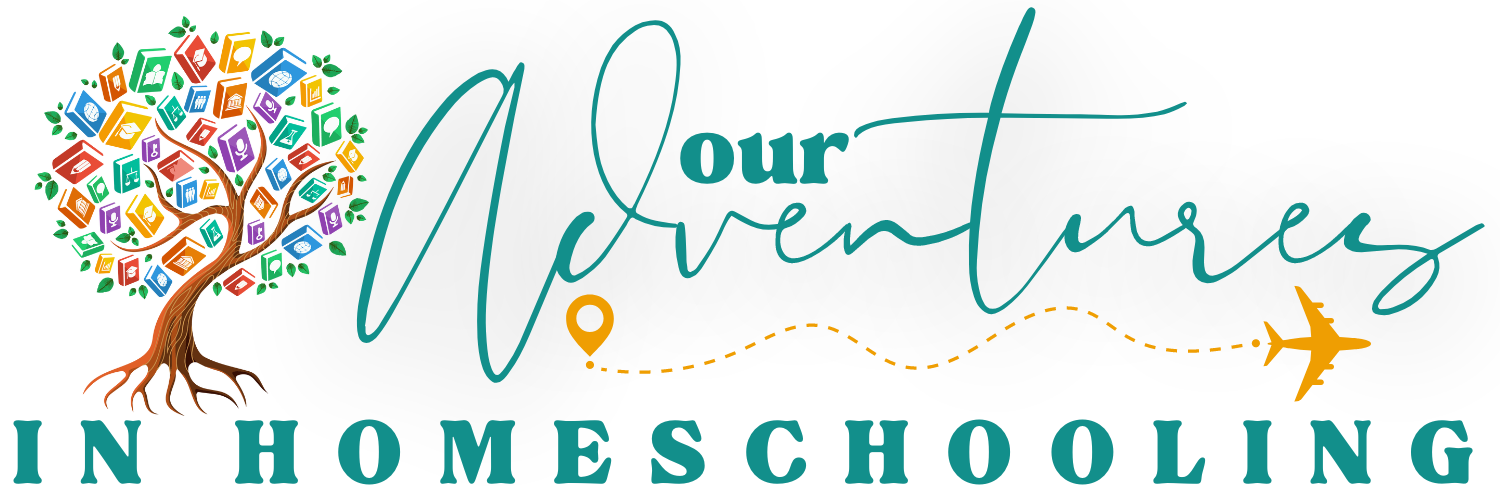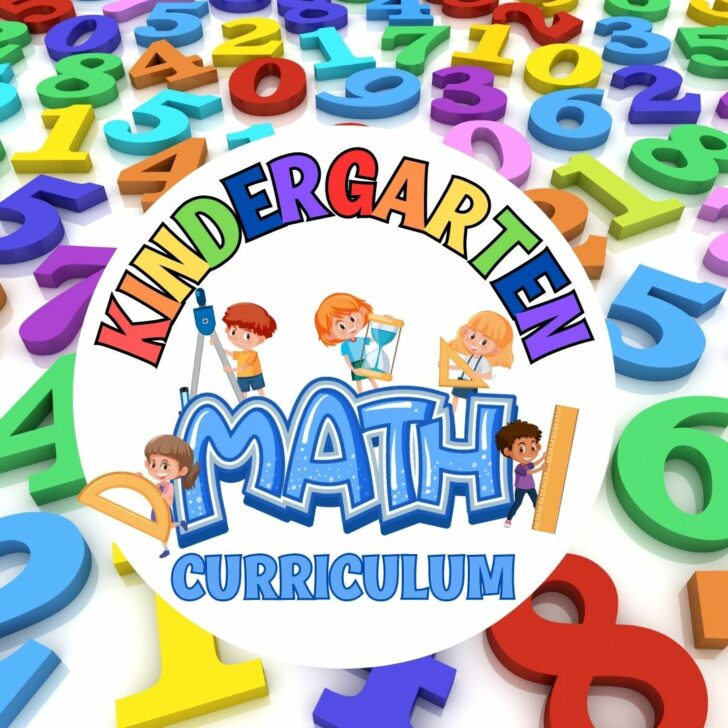Kindergarten is a crucial stage in a child’s educational journey, where they lay the foundation for future academic success. Among the fundamental skills introduced during this stage, mathematics holds a vital place.
A well-designed Kindergarten Math Curriculum not only introduces children to numbers and basic mathematical concepts but also fosters a love for learning and problem-solving.
In this blog post, we will explore the significance of Kindergarten Math Curriculum, understand the key components, highlight some popular kindergarten math curriculums, and share a free kindergarten math curriculum you can put together easily.
Table of Contents




Why a Kindergarten Math Curriculum is Important
- Building a Solid Foundation with Numbers:
- Early exposure to mathematical concepts helps children develop a strong foundation for more advanced math skills in the future.
- Developing Logical Reasoning:
- Math develops critical thinking and logical reasoning skills.
- By engaging in hands-on activities, problem-solving, and logical reasoning exercises, children develop analytical thinking skills from an early age.
- Enhancing Cognitive Abilities:
- Math activities in Kindergarten help enhance cognitive abilities such as memory, attention, and problem-solving skills.
- Children learn to think creatively, develop spatial awareness, and improve their ability to analyze and interpret information.
- Real-World Application:
- Math concepts learned in Kindergarten have practical applications in daily life.
- Understanding numbers, shapes, and patterns helps children make connections to the world around them, fostering problem-solving skills and logical thinking.
Key Components of a Kindergarten Math Curriculum
- Number Sense:
- Number sense forms the foundation of early mathematics education.
- A Kindergarten Math Curriculum introduces children to numbers, counting, and basic operations.
- Concepts like one-to-one correspondence, numeral recognition, and number patterns are typically covered.
- Measurement and Geometry:
- Kindergarten students learn about basic measurements, such as length, weight, and capacity.
- They also explore two-dimensional and three-dimensional shapes, spatial awareness, and positional language.
- Patterns and Sorting:
- Kindergarten Math Curricula focuses on identifying, extending, and creating patterns.
- Children learn to sort objects based on various attributes like color, shape, size, and quantity, enhancing their classification skills.
- Data Analysis:
- Basic data analysis skills are introduced in Kindergarten, where children learn to collect, organize, and represent data using charts, graphs, and pictographs.
- This develops their ability to interpret and draw conclusions from visual representations.




Popular Kindergarten Math Curricula
Click each link to learn more about the math program listed.
- Singapore Math
- Right Start Math
- Zearn (Free)
- Eureka Math
- Math in Focus
- Math With Confidence
- Math U See
- Khan Academy (Free)
Creating Your Own Homeschool Kindergarten Math Curriculum
Instead of spending a ton of money on a curriculum or getting stuck with something your child just doesn’t connect with, try building your own homeschool kindergarten math curriculum. Kindergarten math is the best time to make learning lots of fun for you child.
In this section I’m going to share kindergarten math standards children learn, fun ways to teach these standards, and a relaxed curriculum schedule that will have you and your child LOVING math!




Kindergarten Math Objectives
By the end of kindergarten, children should have mastered several foundational math skills. Here are some key kindergarten math objectives that are typically expected at this stage:
- Counting and Cardinality
- Children should be able to count orally to at least 20 (some states now say 100…but you do what’s best for you) and understand the concept of counting in sequence.
- They should also be able to count objects accurately, understanding that the last number counted represents the total quantity (i.e., cardinality).
- Number Recognition
- Kindergartners should recognize and identify numbers from 0 to 20 (again, some updated standards say this should be 100).
- This includes being able to match numerals with their corresponding quantities.
- One-to-One Correspondence:
- Children should demonstrate the ability to associate one object with one number, understanding that each object in a set should be counted only once.
- Basic Operations:
- While mastery of addition and subtraction is not expected at this stage, kindergartners should have exposure to basic concepts related to these operations.
- They should understand the concepts of joining (addition) and separating (subtraction) in simple contexts.
- Comparisons and Order:
- Kindergartners should be able to compare numbers and objects based on their quantities, using terms like “more,” “less,” “greater than,” and “fewer than.”
- They should also understand the concepts of ordinal numbers (first, second, third, etc.) and be able to arrange objects in a sequential order.
- Shapes and Patterns:
- Children should be able to identify and name common two-dimensional shapes, such as circles, squares, triangles, and rectangles.
- They should also be able to recognize and extend simple patterns, both in terms of colors and shapes.
- Measurement:
- Kindergartners should have a basic understanding of measurement concepts, such as length, weight, capacity, and time.
- They should be able to compare objects based on these attributes (e.g., longer/shorter, heavier/lighter) and understand simple units of measurement (e.g., using words like “longer,” “shorter,” “taller,” “heavier”).
- Data Analysis:
- While not as complex as in higher grades, kindergartners should be exposed to simple data representation and analysis.
- They should be able to organize objects or data into categories and use basic graphs or charts (e.g., pictographs) to represent information visually.
It’s important to note that children may develop at different paces, and individual progress can vary. The mentioned skills are general expectations, and some children may exhibit a higher level of proficiency or may require additional support to master these skills.
Relaxed Homeschool Math Curriculum Schedule
Note: The following kindergarten math curriculum is a general guideline and can be adjusted based on the specific needs and progress of the students.
Day 1-10: Counting and Cardinality
- Introduce numbers 0-10 through songs, rhymes, and hands-on activities.
- Practice counting orally to 20.
- Engage in counting objects and matching them with numerals.
- Explore number patterns and sequences.
Day 11-25: Number Recognition and One-to-One Correspondence
- Reinforce number recognition from 0 to 20 through games, flashcards, and manipulatives.
- Practice counting objects, ensuring one-to-one correspondence.
- Play counting and matching games to strengthen understanding.
Day 26-45: Basic Operations
- Introduce the concept of addition through manipulatives and visual representations.
- Explore simple addition using objects, number lines, and pictures.
- Introduce the concept of subtraction through hands-on activities and real-life scenarios.
- Practice simple subtraction using manipulatives and number lines.
Day 46-60: Comparisons and Order
- Engage in activities comparing quantities, using terms like “more,” “less,” “greater than,” and “fewer than.”
- Sort and classify objects based on attributes like size, color, and shape.
- Practice ordering objects and numbers from least to greatest or vice versa.
Day 61-75: Shapes and Patterns
- Introduce and explore two-dimensional shapes, such as circles, squares, triangles, and rectangles.
- Identify and describe attributes of shapes.
- Create and extend simple patterns using colors, shapes, or objects.
Day 76-90: Measurement
- Introduce measurement concepts like length, weight, capacity, and time.
- Compare objects based on these attributes (e.g., longer/shorter, heavier/lighter).
- Engage in hands-on measurement activities using non-standard units (e.g., blocks, paperclips).
Day 91-120: Data Analysis
- Introduce basic data representation using pictographs and bar graphs.
- Collect and organize data from class surveys or real-life scenarios.
- Interpret simple graphs and draw conclusions based on the information presented.
Day 121-180: Review and Reinforcement
- Review previously learned concepts and skills.
- Provide ongoing practice and reinforcement of all math skills covered.
- Offer a variety of engaging math games, puzzles, and activities to reinforce learning.




Remember to incorporate hands-on activities, visual aids, manipulatives, and real-life examples throughout the curriculum to enhance understanding and engagement. Adjust the pace and depth of instruction based on individual student needs, allowing for differentiation and providing additional support or challenges as required.
This sample curriculum provides a general framework, but feel free to modify it to suit your specific teaching style, resources, and the unique needs of your students.
My Favorite Manipulatives for Our Kindergarten Math Curriculum
Math Manipulatives for Kindergarten
Math manipulatives are physical objects or materials that students can touch, move, and manipulate to explore mathematical concepts. They serve as powerful learning tools in teaching a kindergarten math curriculum for several reasons:
- Concrete Understanding:
Manipulatives provide a concrete representation of abstract mathematical ideas.
By physically manipulating objects, children can see, touch, and interact with mathematical concepts, making them more tangible and understandable.
This hands-on experience helps build a solid foundation of understanding before moving to more abstract representations.
- Multi-Sensory Learning:
Manipulatives engage multiple senses, including sight, touch, and sometimes even sound.
This multi-sensory approach helps enhance the learning experience and allows children to process information through different channels, reinforcing their understanding of mathematical concepts.
It caters to various learning styles and provides a more inclusive learning environment.
- Visual Representation:
Manipulatives offer visual representations of mathematical ideas, which can aid in visualization and spatial reasoning.
Children can see relationships between numbers, shapes, and patterns more clearly, facilitating deeper comprehension.
Visual cues provided by manipulatives can improve memory recall and conceptual understanding.
- Problem Solving and Reasoning:
Manipulatives promote critical thinking, problem-solving, and logical reasoning skills.
Children can use manipulatives to explore different strategies, experiment with mathematical concepts, and solve problems.
Manipulatives provide a concrete context for children to develop their reasoning abilities and make connections between mathematical ideas.
- Motivation and Engagement:
Manipulatives make math more enjoyable and engaging for young learners.
The hands-on nature of manipulative activities adds an element of fun and excitement to the learning process, increasing motivation and interest in mathematics.
This positive experience can help develop a love for learning and a growth mindset towards math.
- Conceptual Transfer:
Manipulatives serve as a bridge between concrete understanding and abstract thinking.
As children gain proficiency with manipulatives, they can gradually transition to mental representations and symbolic notation.
The visual and tactile experiences with manipulatives provide a strong foundation for children to make connections and apply their understanding to solve problems independently.
Incorporating math manipulatives into your kindergarten math curriculum provides a dynamic and interactive learning environment. It supports the development of critical math skills, nurtures conceptual understanding, and cultivates a positive attitude towards mathematics, setting the stage for future mathematical success.
The abacus is a great way to teach kids numbers and math skills while also providing them with a fun and engaging activity. The sliding of colorful beads on a wooden rack teaches them basic arithmetic operations such as counting, addition, subtraction and more.
I absolutely LOVE Learning Resources! They have the best educational toys that my kids adore. This math manipulative set is perfect for teaching math!
There are a total of 10 weights from 1 to 10 and there are 5 different colors, children match up the number of unicorns to the number of the same weight.
Just slide the two double-sided wooden boards into the base, then encourage kids to solve equations by lining up the correct number of beads on the addition and subtraction sides or follow the patterns on the color-matching sides.
Designed to enhance your child's cognitive development, the counting popsicle math manipulative set includes 10 pops that have colored dots from 1 to 10 along with 10 removable covers that feature corresponding numbers. Your child will have fun while learning to recognize numbers, count, and even do simple addition and subtraction!
The package includes 48pcs mini dinosaurs in 6 bright colors, 6pcs plastic sorting bowls and 2pcs tweezers. It's a great preschool Montessori educational math toy that helps kids master early math skills such as counting, grouping, patterning, and comparing.
Race through the swamp while facing math challenges and meeting funny swamp creatures along the way.
Link the corresponding number of clips to the 20 numbered ice cream cones. Count colors, create patterns, visualize amounts, and learn through hands-on play.
Kids grab a swatter, add or subtract, and swat their way to new kindergarten math skills every time they play these fast-paced math games for kids!
This adorable frog balance scale will have you child recognizing the number with the quanity it represents in no time!
If your kids are like mine, then pop-its are ALL the rage! This brings the fun of pop-its to learning!
Children can develop a mathematical understanding by stacking different numbers of circles, and train children to do simple mathematical counting.
Gameschooling is so much fun and very educational! This kindergarten math game is perfect for a fun afternoon of learning!
Check out the benefits of gameschooling here.
Teaching geometry is loads of fun with tanagrams!















